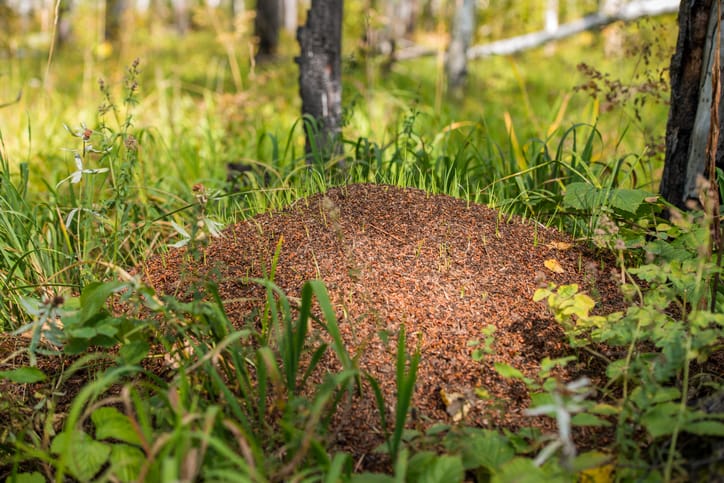Although ants are annoying pests that often invade homes and businesses and can cause some structural damage to properties, they are also interesting creatures with complex behaviors. In fact, ants are highly social creatures within their colony. It is their social function and the complexities behind the way they run their ant colony that make ants so interesting, too.
When referring to an ant colony, it goes beyond their physical habitat, or nest. Discussions about an ant colony also involve the social structures and rules that ants live by. When you walk around outside, you may notice mounds of dirt and think, “There’s an ant colony!” However, that is merely an entrance or exit rather than the colony. The colony itself is underground and may exist as deep down as 25 feet.
Social Structure
Ants have a very specific social structure. Because of their social structure, the colony consists of four different classes of ants. At the top of the social chain, you have the queen. As her name suggests, she is in charge of the colony. She is also the one to grow the colony by laying several eggs, usually into the thousands.
The queen has her own chamber where she resides and lays her eggs. The queen’s chamber is usually at the bottom of the nest, so it is the deepest part of the nest. The reason her chamber is on the bottom is to help protect her from threats posed by humans and predators.
The majority of ants within the colony are female, and female ants are almost always worker ants. Female worker ants do not lay eggs for the colony. Instead, their primary role is to build and provide food for the colony. They will leave the nest in search of food, foraging for enough to ensure the survival of the queen and other ants that live within the colony.
Male ants grow up to be drones. Drones are in charge of mating with the queen so she can continue to lay eggs. As soon as they finish mating, the drone dies, which is why he is almost never seen outside the nest.
Out of all the ants in the colony, the queen is the only one that has wings. Every now and then, the queen may lay eggs that end up hatching winged males or females. The winged males and females are referred to as alates. The alates must leave the colony as a swarm and begin new colonies.
Winged male ants, like drones, die soon after they mate, but the females often survive and become queens of their own colonies. The lifespan of each class of ant varies, too, to ensure they can carry out their role. Once the colony is established, however, the ants may live as long as the queen. In truth, the lifespan of an ant varies, depending on the species of ant and how established the colony is.
If you suspect that there is an ant colony in or near your home, contact an ant exterminator. An exterminator will have to handle the situation because they are capable of targeting the whole colony. The only way to stop an ant invasion is the tackle the entire colony, including the queen ant.
